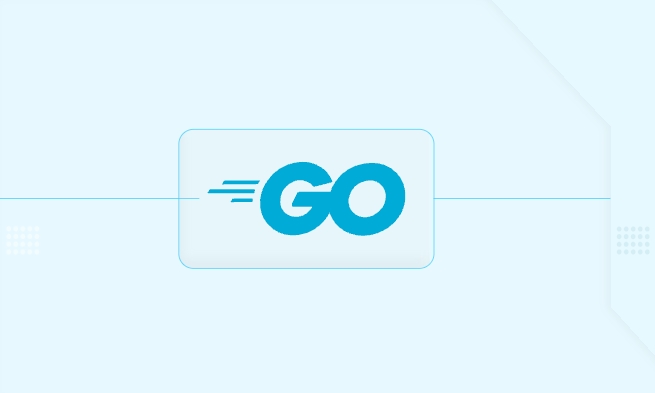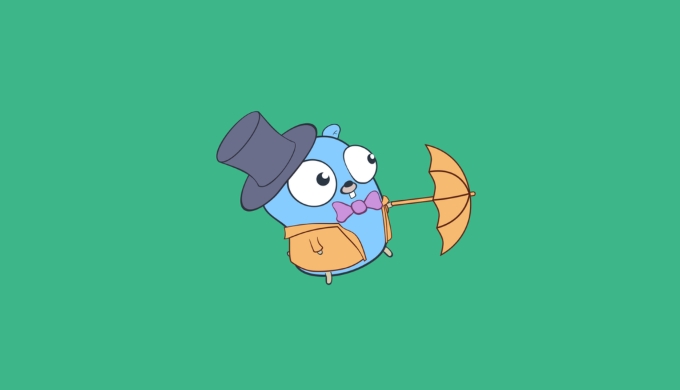 Backend Development
Backend Development
 Golang
Golang
 What is the purpose of the fallthrough keyword in golang switch statements
What is the purpose of the fallthrough keyword in golang switch statements
What is the purpose of the fallthrough keyword in golang switch statements
Jul 13, 2025 am 03:03 AMIn Go, you use fallthrough in a switch statement to explicitly continue execution into the next case. 1. It allows shared logic across multiple cases without duplication. 2. Unlike C or Java, Go breaks by default to prevent accidental bugs. 3. fallthrough transfers control to the next case regardless of condition. 4. It must be the last line in a case block and cannot be used in default. 5. Avoid overusing it; prefer combining cases with commas or extracting functions for clarity.

In Go, the fallthrough keyword in a switch statement is used to explicitly allow execution to continue into the next case. Normally, once a case is matched and executed, the switch block exits. But sometimes you want multiple cases to share logic, and that’s where fallthrough comes in.

Why would you use fallthrough?
Most programming languages with switch statements (like C or Java) automatically fall through to the next case unless you break out of it. Go takes the opposite approach — it breaks by default. This was a design decision to avoid accidental bugs from unintended fallthrough behavior.

However, there are cases where you do want to execute code from multiple cases. For example:
switch value := someFunc(); value {
case 1:
fmt.Println("One")
case 2:
fmt.Println("Two or maybe three")
case 3:
fmt.Println("Three")
}If value is 2, this will print both "Two or maybe three" and "Three" because of the fallthrough.

You might use fallthrough when writing parsers, handling state machines, or grouping similar conditions together without duplicating code.
How does fallthrough work exactly?
When you use fallthrough, it transfers control to the first line of the next case regardless of condition. It doesn't re-evaluate the value being switched on — it just continues executing.
Here's a simple example:
n := 2
switch n {
case 1:
fmt.Println("One")
case 2:
fmt.Println("Two")
fallthrough
case 3:
fmt.Println("Three")
default:
fmt.Println("Other")
}Output:
Two Three
Even though n is 2, the fallthrough causes the case 3 block to run as well.
A few things to keep in mind:
fallthroughmust be the last line in a case block.- You can't use it in the
defaultcase. - It only moves to the immediate next case, not all remaining ones.
When should you avoid using fallthrough?
While fallthrough can be useful, it can also make code harder to read and maintain if overused. Since it's not the default behavior in Go, someone reading your code might miss the intentional fallthrough and assume it's a bug or mistake.
It's generally better to:
- Combine cases that share logic with commas instead of fallthrough when possible.
- Extract shared logic into a helper function.
- Add a comment explaining why fallthrough is needed, especially if it's not obvious.
For example, this avoids fallthrough entirely:
switch n {
case 2, 3:
fmt.Println("Two or Three")
}Use fallthrough only when it genuinely makes the logic clearer or more efficient than other approaches.
So yeah, fallthrough gives you fine-grained control over how cases in a switch behave, but it's best reserved for specific situations where its intent is clear and justified.
The above is the detailed content of What is the purpose of the fallthrough keyword in golang switch statements. For more information, please follow other related articles on the PHP Chinese website!

Hot AI Tools

Undress AI Tool
Undress images for free

Undresser.AI Undress
AI-powered app for creating realistic nude photos

AI Clothes Remover
Online AI tool for removing clothes from photos.

Clothoff.io
AI clothes remover

Video Face Swap
Swap faces in any video effortlessly with our completely free AI face swap tool!

Hot Article

Hot Tools

Notepad++7.3.1
Easy-to-use and free code editor

SublimeText3 Chinese version
Chinese version, very easy to use

Zend Studio 13.0.1
Powerful PHP integrated development environment

Dreamweaver CS6
Visual web development tools

SublimeText3 Mac version
God-level code editing software (SublimeText3)

Hot Topics
 What are the implications of Go's static linking by default?
Jun 19, 2025 am 01:08 AM
What are the implications of Go's static linking by default?
Jun 19, 2025 am 01:08 AM
Go compiles the program into a standalone binary by default, the main reason is static linking. 1. Simpler deployment: no additional installation of dependency libraries, can be run directly across Linux distributions; 2. Larger binary size: Including all dependencies causes file size to increase, but can be optimized through building flags or compression tools; 3. Higher predictability and security: avoid risks brought about by changes in external library versions and enhance stability; 4. Limited operation flexibility: cannot hot update of shared libraries, and recompile and deployment are required to fix dependency vulnerabilities. These features make Go suitable for CLI tools, microservices and other scenarios, but trade-offs are needed in environments where storage is restricted or relies on centralized management.
 How do I create a buffered channel in Go? (e.g., make(chan int, 10))
Jun 20, 2025 am 01:07 AM
How do I create a buffered channel in Go? (e.g., make(chan int, 10))
Jun 20, 2025 am 01:07 AM
To create a buffer channel in Go, just specify the capacity parameters in the make function. The buffer channel allows the sending operation to temporarily store data when there is no receiver, as long as the specified capacity is not exceeded. For example, ch:=make(chanint,10) creates a buffer channel that can store up to 10 integer values; unlike unbuffered channels, data will not be blocked immediately when sending, but the data will be temporarily stored in the buffer until it is taken away by the receiver; when using it, please note: 1. The capacity setting should be reasonable to avoid memory waste or frequent blocking; 2. The buffer needs to prevent memory problems from being accumulated indefinitely in the buffer; 3. The signal can be passed by the chanstruct{} type to save resources; common scenarios include controlling the number of concurrency, producer-consumer models and differentiation
 How does Go ensure memory safety without manual memory management like in C?
Jun 19, 2025 am 01:11 AM
How does Go ensure memory safety without manual memory management like in C?
Jun 19, 2025 am 01:11 AM
Goensuresmemorysafetywithoutmanualmanagementthroughautomaticgarbagecollection,nopointerarithmetic,safeconcurrency,andruntimechecks.First,Go’sgarbagecollectorautomaticallyreclaimsunusedmemory,preventingleaksanddanglingpointers.Second,itdisallowspointe
 How can you use Go for system programming tasks?
Jun 19, 2025 am 01:10 AM
How can you use Go for system programming tasks?
Jun 19, 2025 am 01:10 AM
Go is ideal for system programming because it combines the performance of compiled languages ??such as C with the ease of use and security of modern languages. 1. In terms of file and directory operations, Go's os package supports creation, deletion, renaming and checking whether files and directories exist. Use os.ReadFile to read the entire file in one line of code, which is suitable for writing backup scripts or log processing tools; 2. In terms of process management, the exec.Command function of the os/exec package can execute external commands, capture output, set environment variables, redirect input and output flows, and control process life cycles, which are suitable for automation tools and deployment scripts; 3. In terms of network and concurrency, the net package supports TCP/UDP programming, DNS query and original sets.
 How do I call a method on a struct instance in Go?
Jun 24, 2025 pm 03:17 PM
How do I call a method on a struct instance in Go?
Jun 24, 2025 pm 03:17 PM
In Go language, calling a structure method requires first defining the structure and the method that binds the receiver, and accessing it using a point number. After defining the structure Rectangle, the method can be declared through the value receiver or the pointer receiver; 1. Use the value receiver such as func(rRectangle)Area()int and directly call it through rect.Area(); 2. If you need to modify the structure, use the pointer receiver such as func(r*Rectangle)SetWidth(...), and Go will automatically handle the conversion of pointers and values; 3. When embedding the structure, the method of embedded structure will be improved, and it can be called directly through the outer structure; 4. Go does not need to force use getter/setter,
 What are interfaces in Go, and how do I define them?
Jun 22, 2025 pm 03:41 PM
What are interfaces in Go, and how do I define them?
Jun 22, 2025 pm 03:41 PM
In Go, an interface is a type that defines behavior without specifying implementation. An interface consists of method signatures, and any type that implements these methods automatically satisfy the interface. For example, if you define a Speaker interface that contains the Speak() method, all types that implement the method can be considered Speaker. Interfaces are suitable for writing common functions, abstract implementation details, and using mock objects in testing. Defining an interface uses the interface keyword and lists method signatures, without explicitly declaring the type to implement the interface. Common use cases include logs, formatting, abstractions of different databases or services, and notification systems. For example, both Dog and Robot types can implement Speak methods and pass them to the same Anno
 How do I use string functions from the strings package in Go? (e.g., len(), strings.Contains(), strings.Index(), strings.ReplaceAll())
Jun 20, 2025 am 01:06 AM
How do I use string functions from the strings package in Go? (e.g., len(), strings.Contains(), strings.Index(), strings.ReplaceAll())
Jun 20, 2025 am 01:06 AM
In Go language, string operations are mainly implemented through strings package and built-in functions. 1.strings.Contains() is used to determine whether a string contains a substring and returns a Boolean value; 2.strings.Index() can find the location where the substring appears for the first time, and if it does not exist, it returns -1; 3.strings.ReplaceAll() can replace all matching substrings, and can also control the number of replacements through strings.Replace(); 4.len() function is used to obtain the length of the bytes of the string, but when processing Unicode, you need to pay attention to the difference between characters and bytes. These functions are often used in scenarios such as data filtering, text parsing, and string processing.
 How do I use the io package to work with input and output streams in Go?
Jun 20, 2025 am 11:25 AM
How do I use the io package to work with input and output streams in Go?
Jun 20, 2025 am 11:25 AM
TheGoiopackageprovidesinterfaceslikeReaderandWritertohandleI/Ooperationsuniformlyacrosssources.1.io.Reader'sReadmethodenablesreadingfromvarioussourcessuchasfilesorHTTPresponses.2.io.Writer'sWritemethodfacilitateswritingtodestinationslikestandardoutpu





